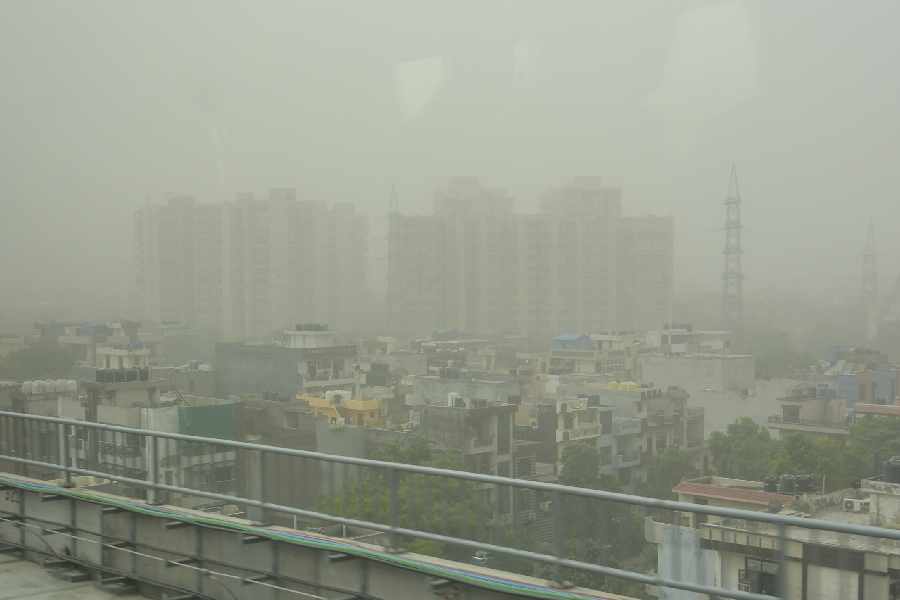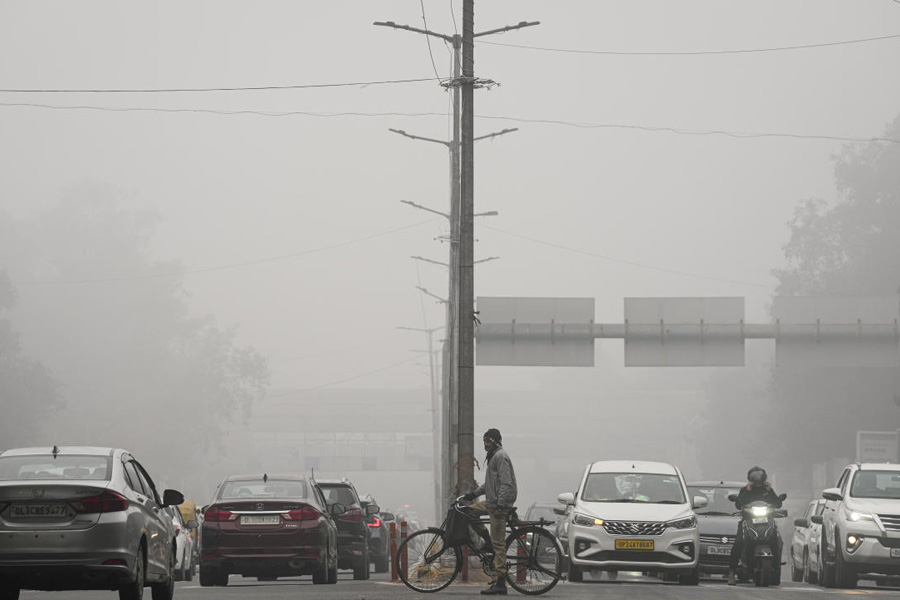Strong winds swept across Delhi on Tuesday morning, raising dust and affecting air quality as well as reducing visibility to 1,000 metres, the India Meteorological Department said.
Satellite pictures released by the meteorological office showed a thick layer of dust covering large parts of northwest India. Meteorologists have attributed the dusty conditions to a combination of intense heat in northwest India over the past five days, parched soil due to the absence of rainfall and strong winds that have persisted since midnight.
"Strong dust-raising winds prevailed over Delhi in the early hours. The wind speed dropped from 30-35 kmph to 12 kmph by 9 am and will come down further during the day, allowing the dust to settle down," Kuldeep Srivastava, the head of the IMD's regional forecasting centre said.
The visibility levels at the Palam Observatory, close to the Indira Gandhi International Airport, stood at 1,100 metres at 9 am as compared to 4,000 metres at 9 am on Monday, senior IMD scientist R K Jenamani said. "Dust concentration has gone up multiple times. The PM10 concentration rose from 140 micrograms per cubic metre at 4 am to 775 micrograms per cubic metre at 8 am. It is mainly because of strong gusty winds prevailing over the area. Dust will settle down soon," said V K Soni, the head of the IMD's Environment Monitoring and Research Centre.
Dust particles, especially fine particulate matter (PM2.5), can penetrate deep into the respiratory system when inhaled. They can irritate the lungs, trigger respiratory problems, and exacerbate existing conditions such as asthma, bronchitis, and allergies. The city recorded a minimum temperature of 27.4 degrees Celsius, a notch more than normal. The maximum temperature is likely to settle around 40 degrees Celsius.
Over the past four days, Delhi witnessed maximum temperatures soaring above the 40-degree Celsius mark, intensifying the hot weather conditions.
A partly cloudy sky and very light rain towards the evening may provide marginal relief, the IMD said. The maximum temperature is predicted to rise to 44 degrees Celsius by Sunday.
Except for the headline, this story has not been edited by The Telegraph Online staff and has been published from a syndicated feed.










